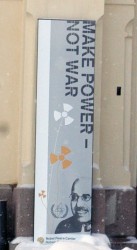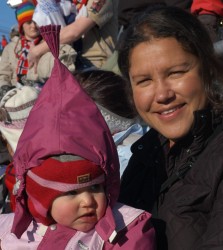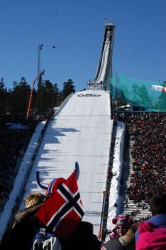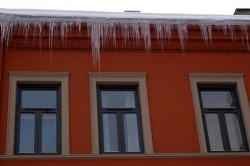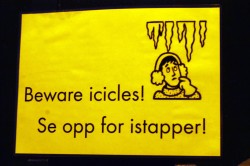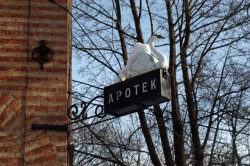Mon 27 Mar 2006
Resistance is not futile
Posted by Mary under Norway
No Comments
 On a sunny day earlier this week my colleague Christian Ruge took me to see the Norwegian WWII Resistance Museum at Akershus fort on Oslo’s waterfront. The museum imaginatively documents the country’s effort to resist the German invasion in April 1940 and subsequent five-year occupation: a barrage of German rifles point menacingly at the entrance, while an underground chamber contains artifacts used by the resistance.
On a sunny day earlier this week my colleague Christian Ruge took me to see the Norwegian WWII Resistance Museum at Akershus fort on Oslo’s waterfront. The museum imaginatively documents the country’s effort to resist the German invasion in April 1940 and subsequent five-year occupation: a barrage of German rifles point menacingly at the entrance, while an underground chamber contains artifacts used by the resistance.
The story of the young nation’s resistance is heartening beginning from when the army managed to sink the German cruiser Blücher as it entered Oslo fjord, allowing enough for the government to escape the capital for London where it ruled in exile. King Haakon traveled through the country’s remote interior evading German soldiers until he too escaped by sea for England.
 Once the Nazi regime took control, the Norwegian population mounted a spirited campaign and sustained campaign of civil disobedience. Illegal newspapers circulated countering to German propaganda. Norwegians refused to speak German or sit beside a German on public transportation. They wore a paper clip worn on their lapel to represent their patriotism as they assumed the paper clip to be a Norwegian invention.
Once the Nazi regime took control, the Norwegian population mounted a spirited campaign and sustained campaign of civil disobedience. Illegal newspapers circulated countering to German propaganda. Norwegians refused to speak German or sit beside a German on public transportation. They wore a paper clip worn on their lapel to represent their patriotism as they assumed the paper clip to be a Norwegian invention.
It was interesting to visit with Christian. His grandfather was interned in the far north of the country together with hundreds of other Norwegian teachers for refusing to adhere to introduce a national socialist curriculum. Christian’s great-uncle General Otto Ruge was Commander-in-chief at the time of the invasion and negotiated the surrender of the remains of the Norwegian army after the fall of southern Norway and withdrawal of allied forces. He was subsequently arrested and sent to Germany for the rest of the war. On the way out we passed by a statue of him with maps in hand and head turned toward the castle.

